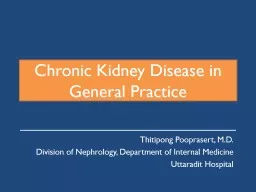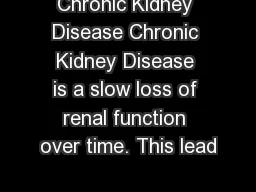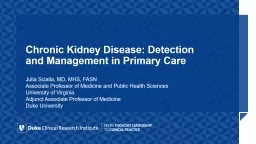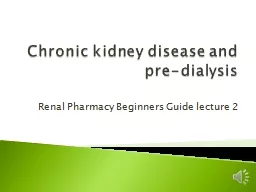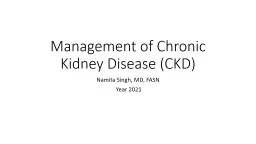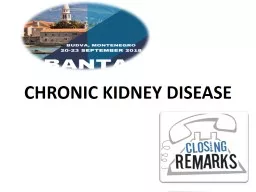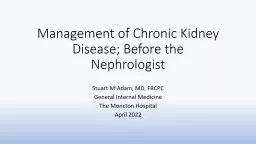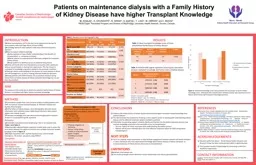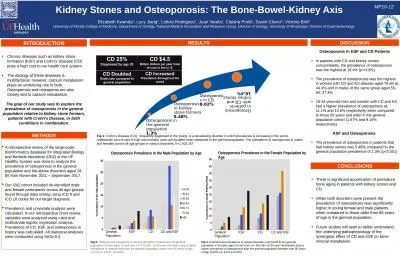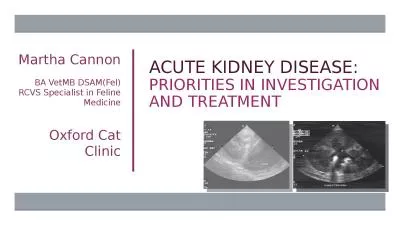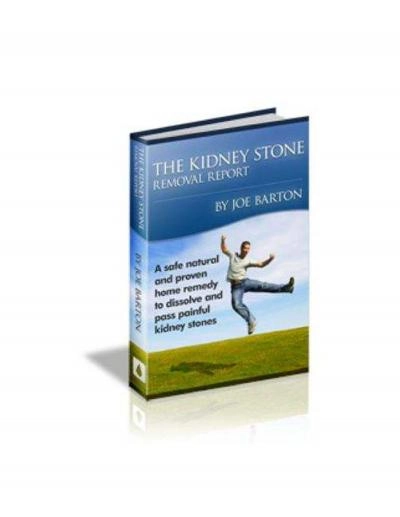PPT-Chronic Kidney Disease in General Practice
Author : PeacefulPenguin | Published Date : 2022-08-01
Thitipong Pooprasert MD Division of Nephrology Department of Internal Medicine Uttaradit Hospital Definition Abnormalities of kidney structure or function gt3
Presentation Embed Code
Download Presentation
Download Presentation The PPT/PDF document "Chronic Kidney Disease in General Pract..." is the property of its rightful owner. Permission is granted to download and print the materials on this website for personal, non-commercial use only, and to display it on your personal computer provided you do not modify the materials and that you retain all copyright notices contained in the materials. By downloading content from our website, you accept the terms of this agreement.
Chronic Kidney Disease in General Practice: Transcript
Download Rules Of Document
"Chronic Kidney Disease in General Practice"The content belongs to its owner. You may download and print it for personal use, without modification, and keep all copyright notices. By downloading, you agree to these terms.
Related Documents

